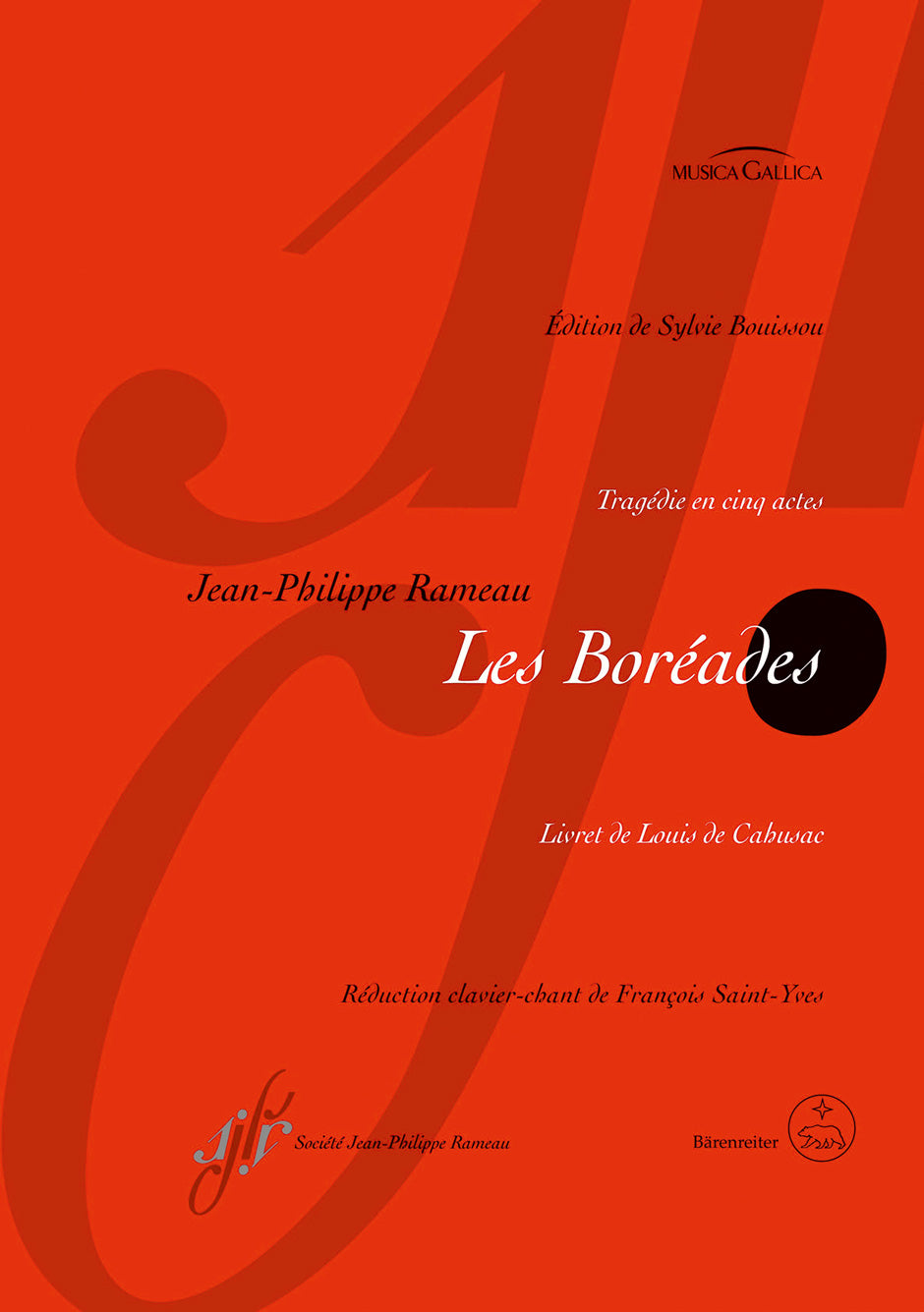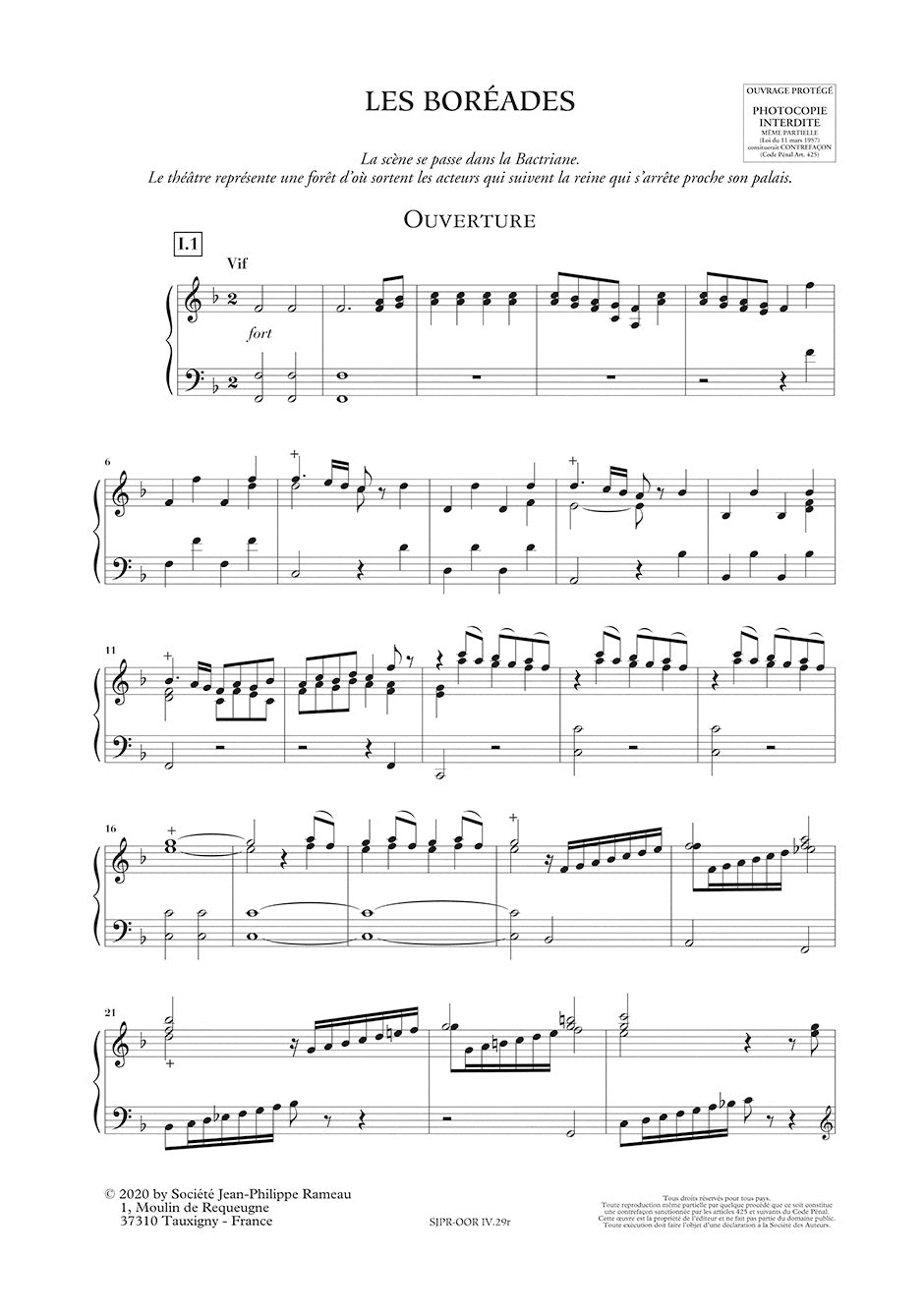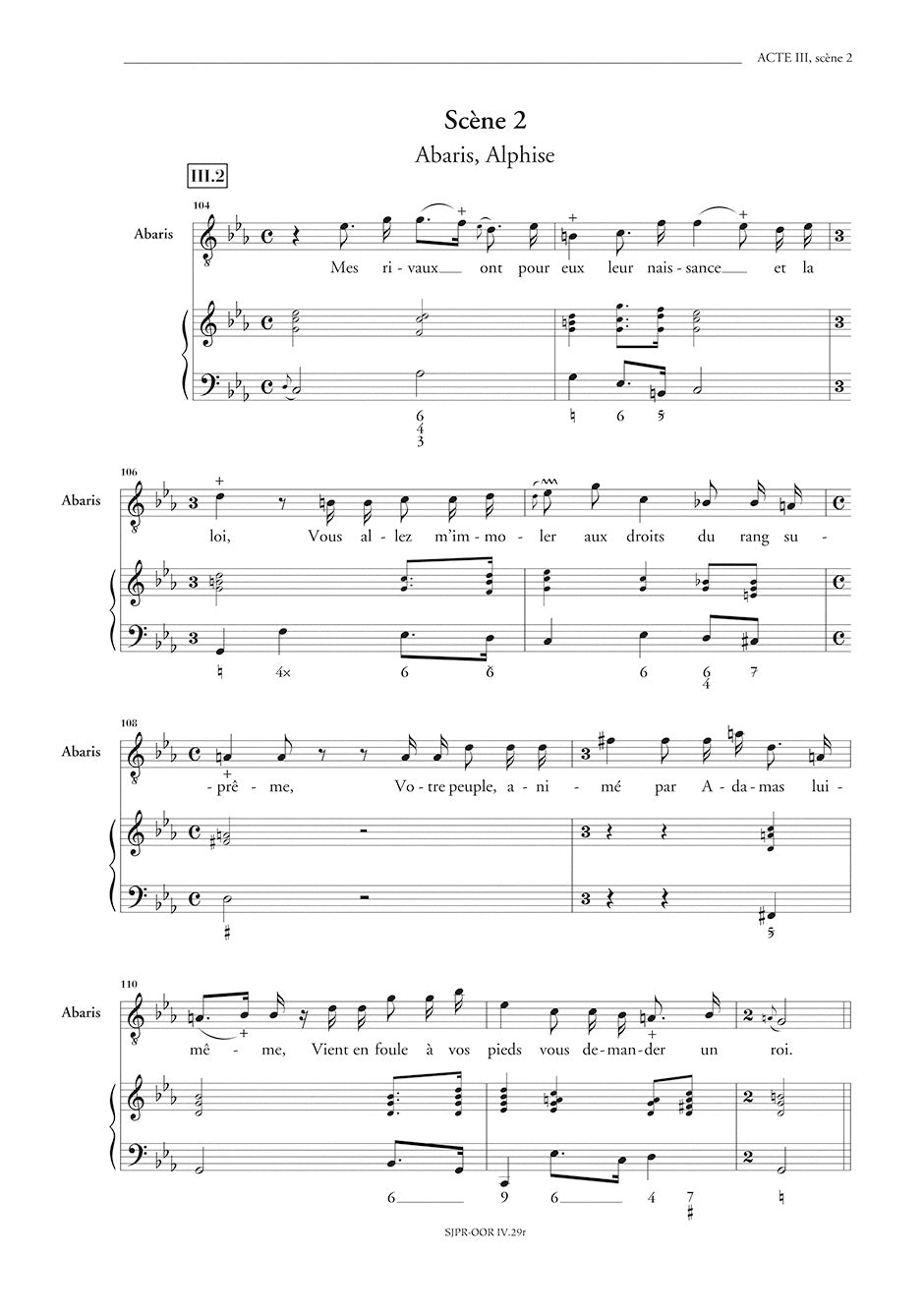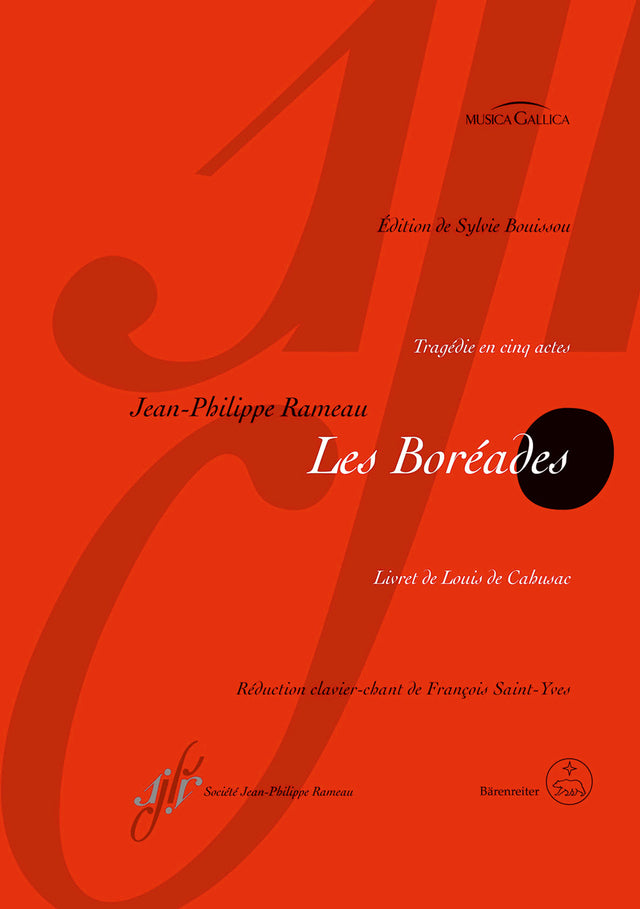Rameau: Les Boréades, RCT 31
In stock and typically ships within 1 business day.
- Composer: Jean-Philippe Rameau (1683-1764)
- Editor: Sylvie Bouissou
- Format: Vocal Score
- Instrumentation: Opera
- Work: Les Boréades, RCT 31
- Work Language: French
- ISMN:
- Size: 7.5 x 10.6 inches
- Pages: 269
- Urtext / Critical Edition
Description
"Les Boréades" was actually intended to be performed at the Théâtre de Choisy in Paris in 1763 at the end of the Seven Years' War on the occasion of the peace celebrations. However, after two rehearsals with the biggest stars of the time in Versailles and Paris, the work was cancelled – possibly due to censorship of the libretto which questions the tradition of succession to royal power and makes the self-determination of a woman a topic. These were toxic subjects that must have been unacceptable to the court and the king, who had become sensitized after the assassination attempt on Louis XV in 1757.
In the opera, Boreas who is the god of the north wind, wants to marry one of his sons, Borilée or Calisis, to Alphise, the Queen of Bactria. But she spurns both of them and prefers another, Abaris, much to Boreas' annoyance. The subversive nature of the libretto and its libertarian morals are made abundantly clear in the characterization of the protagonists: Abaris, who is plagued by self-doubt, is an anti-hero, the gods appear autocratic and stupid, whilst Alphise denounces the tyrannical princes' abuse of power and demands the right to decide freely for herself – and is publicly tortured for it.
Censorship, but also intrigues and a fire: "Les Boréades" had to battle many adversities before the work can now finally be performed unhindered with this edition. On the positive side, however, these circumstances have meant that we now have a "pure" work, free of subsequent compromises or forced revisions.
This vocal score is based on the new critical edition which has been published as volume IV.29 of the "Opera omnia Rameau". The main sources used here are the production score, copied in the Académie royale de musique de Paris, with corrections and annotations by Rameau, as well as the original parts.
Publishers use a lot of words to describe what they sell, and we know it can be confusing. We've tried to be as clear as possible to make sure you get exactly what you are looking for. Below are descriptions of the terms that we use to describe the various formats that music often comes in.
Choral Score
A score for vocalists that only contains the vocal lines. The instrumental parts are not there for reference. Generally, cheaper than a vocal score and requires multiple copies for purchase.
Facsimile
Reproductions of the original hand-written scores from the composer.
Full Score
For ensemble music, this indicates that the edition contains all parts on a single system (there are not separate parts for each player). In larger ensembles, this is for the conductor.
Hardcover
Hardbound. Generally either linen-covered or half-leather.
Orchestral Parts
Similar to a wind set, this is a collection of parts. In the case of strings, the numbers listed are the number of copies included, though generally these are available individually (often with minimum quantities required).
Paperback
When publishers offer multiple bindings (e.g. hardcover) or study scores, this is the "standard" version. If you're planning to play the music, this is probably what you want.
Performance / Playing Score
A score of the music containing all parts on one system, intended for players to share. There are not separate parts for each player.
Set of Parts
For ensemble music, this indicates that there are separate individual parts for each player.
Solo Part with Piano Reduction
For solo pieces with orchestra, this is a version that contains a piano reduction of the orchestra parts. For piano pieces, two copies are typically needed for performance.
Study Score
A small (think choral size) copy of the complete score meant for studying, and not playing. They make great add-ons when learning concertos and small chamber works.
Vocal Score
A score prepared for vocalists that includes the piano/organ part or a reduction of the instrumental parts.
Wind Set
For orchestral music, this is a collection of wind and percussion parts. The specific quantities of each instrument are notated.
With Audio
In addition to the printed music, the edition contains recordings of the pieces. This may be an included CD, or access to files on the internet.
With / Without Fingering (Markings)
Some publishers prepare two copies - a pure Urtext edition that includes no fingering (or bowing) suggestions and a lightly edited version that includes a minimal number of editorial markings.





